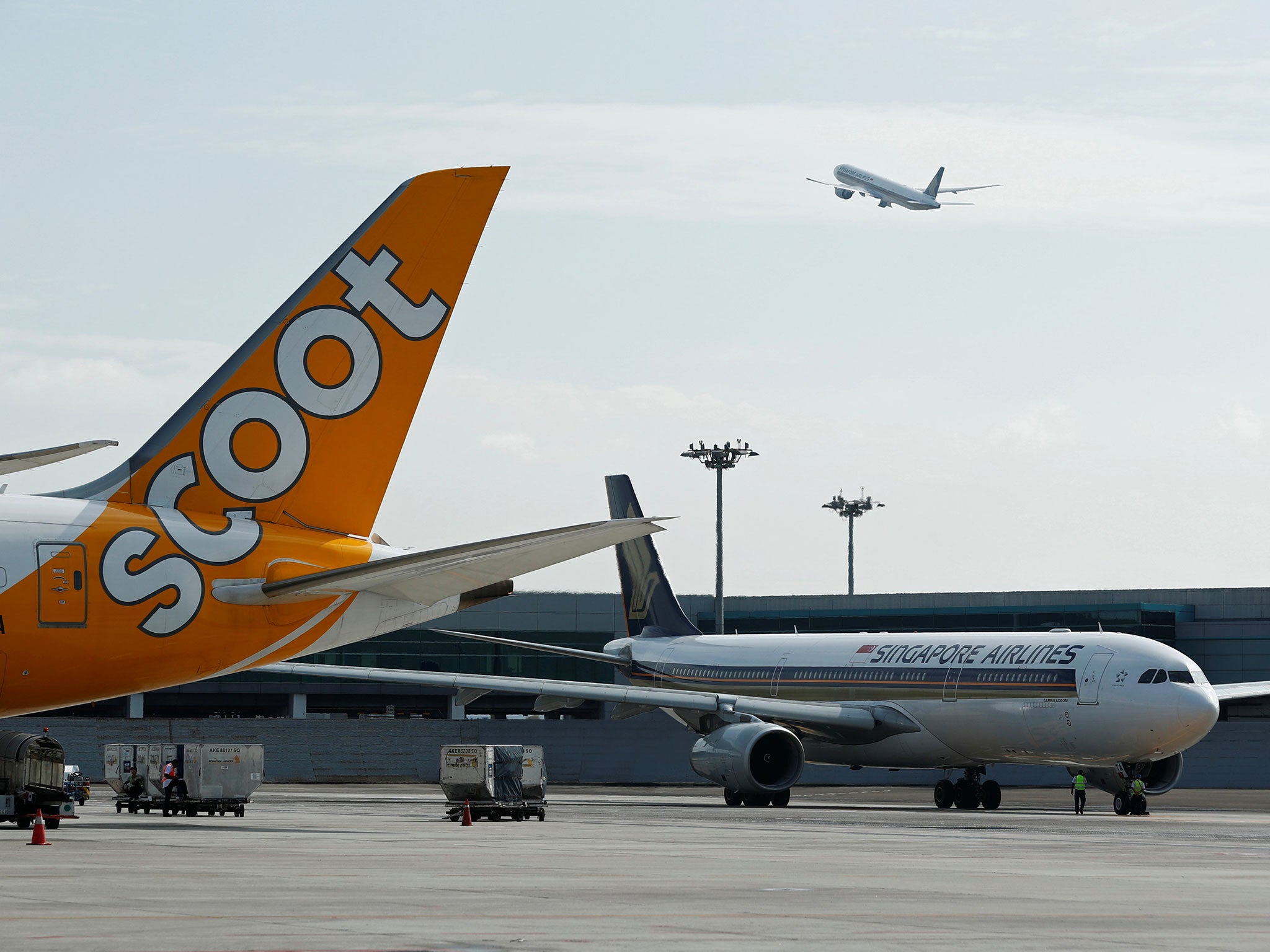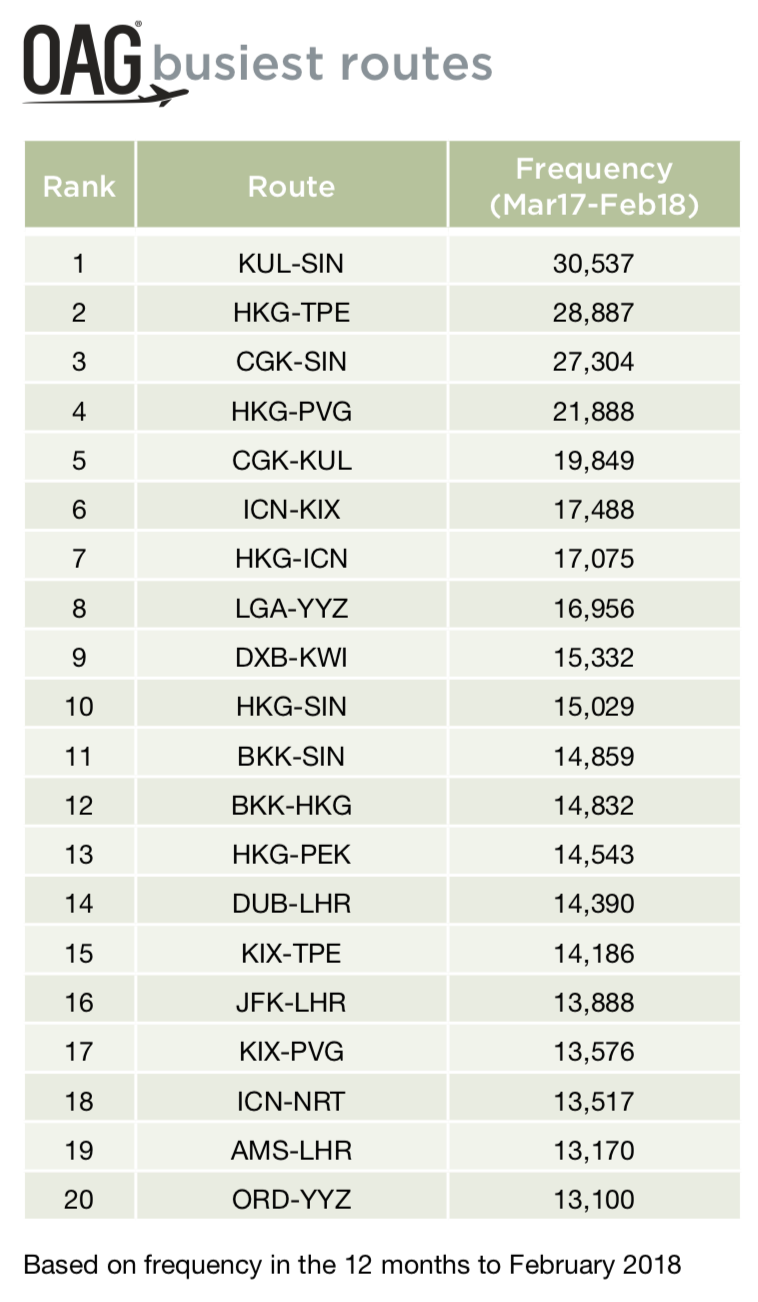Asia has the world’s busiest flight routes
Plane Talk: Highest-place European link is Heathrow to Dublin

Your support helps us to tell the story
From reproductive rights to climate change to Big Tech, The Independent is on the ground when the story is developing. Whether it's investigating the financials of Elon Musk's pro-Trump PAC or producing our latest documentary, 'The A Word', which shines a light on the American women fighting for reproductive rights, we know how important it is to parse out the facts from the messaging.
At such a critical moment in US history, we need reporters on the ground. Your donation allows us to keep sending journalists to speak to both sides of the story.
The Independent is trusted by Americans across the entire political spectrum. And unlike many other quality news outlets, we choose not to lock Americans out of our reporting and analysis with paywalls. We believe quality journalism should be available to everyone, paid for by those who can afford it.
Your support makes all the difference.The UK, and especially London, is used to being at the top of global aviation tables. The British capital is the world-leading hub of aviation, with at least 150 million passengers flying in and out of its six airports this year.
Yet the city doesn’t even make the top 10 of the world’s busiest international air routes, measured by the number of flights, as compiled by OAG, the schedule experts.
Top of the world is a route which, I suspect, is only borrowing the crown: Kuala Lumpur to Singapore. Four million people fly this short hop each year, on over 30,000 flights. That’s more than 80 a day.
The Malaysian capital and the city state are economic powerhouses, with large populations, and terrestrial transport between them is poor. They really should have been connected by a high-speed rail link covering the 200-odd miles between them a decade ago, and certainly will be within 10 years – at which point, as Heathrow to Paris CDG discovered when Eurostar began in earnest, the number of flights will diminish dramatically.
At that point, expect Hong Kong to Taipei to take over the top spot. It has almost as many flights (just short of 29,000) and carries far more passengers, over 6.5 million. At 500 miles, it is chunky enough for the wide-bodied Airbus A330 to be deployed – making up almost half the flights on the link, with the Boeing 777 next most popular at one-fifth of departures.
Singapore pops up again in third place, with the 550-mile link to Jakarta served by 27,300 flights a year. At 4.7 million passengers, it beats the Kuala Lumpur connection for volume.
North to Hong Kong again for fourth position, with Shanghai the chosen destination for almost 4 million passengers last year aboard 22,000 flights.
And in fifth, the dominance of East Asia is evident from the Jakarta-Kuala Lumpur connection – just short of 20,000 flights a year, and 2.7 million passengers.

The first appearance of a non-capital city (if Singapore and Hong Kong are awarded this de facto status) is in sixth, with Osaka to Seoul (Incheon). At 550 miles it is a lot shorter than the flight to Tokyo Narita (800 miles, and in 18th place). And the link has a wide variation in aircraft used: from Boeing 737s and Airbus A320s to 747s and A380s.
You can possibly predict the next up: Hong Kong to Seoul, this time featuring A350s and 787s among the choice of plane on the 3 hour, 30 minute link. If the flights were spread evenly around the clock, there would be one every half-hour.
The rest of the world finally makes an appearance in eighth place: New York La Guardia to Toronto Pearson. Although LGA is notionally a domestic airport, pre-clearance in Canada means that passengers and baggage are treated as though they have arrived from the US. With almost 17,000 flights a year, the inhabitants of America’s and Canada’s biggest cities have plenty of choice.
The dominant Gulf hub, Dubai, beats the world in terms of overall passenger numbers for international journeys, but makes only ninth place in this table. The destination surprised me: not London Heathrow, Mumbai, Delhi, Istanbul or another giant city, but Kuwait. Such is the demand that almost two million people fly on over 15,000 flights each year.
And back to Asia for 10th position: Hong Kong to Singapore. In passenger numbers, though, it is the most impressive, with an average of 272 seats on the plane between them. Airlines put big planes on this lucrative route, and the four-hour flying time means that business passengers will happily pay a premium for long-haul standards.
Where does this leave Europe? Way behind, with Heathrow to Dublin in 14th place, with fewer than two million passengers on 14,390 flights. A multi-airport city will always perform worse in such a survey than one with a single hub.
Heathrow, the only British airport in the top 20, appears again in 16th position, with the New York JFK link: by far the longest route in the top 20. And the UK’s biggest hub makes a third entry at 19th: Heathrow to Amsterdam.
But as with Kuala Lumpur to Singapore, the rail option between London and the Dutch capital may start to erode the air share.
Join our commenting forum
Join thought-provoking conversations, follow other Independent readers and see their replies
Comments